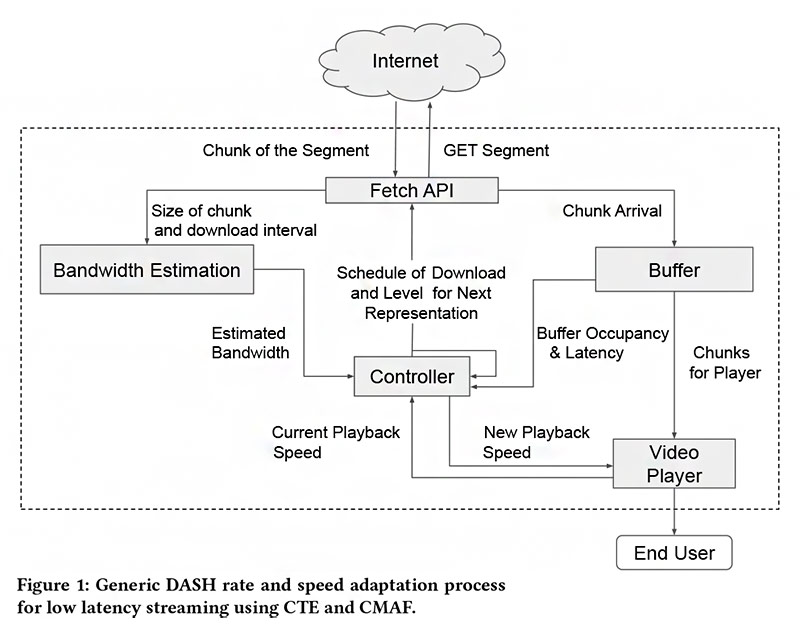The research explores the pressing need for low latency in over-the-top (OTT) applications like online gaming, video chat, sports betting, and live auctions, and how Dynamic Adaptive Streaming over HTTP (DASH) can address this challenge. The authors introduce QLive as a solution to optimize latency and bandwidth utilization, focusing on chunked transfer encoding (CTE) and the common media application format (CMAF).
The study is significant in the context of increasing demand for low-latency streaming. Traditional DASH clients were not designed with stringent latency requirements in mind, leading to substantial latency issues in current solutions. QLive aims to rectify this.

The research presents a comprehensive and well-structured approach to solving the latency problem. It leverages a hybrid bandwidth estimation algorithm and a queuing system model, collectively known as QLive, to control latency efficiently. The experimental results are promising, with QLive achieving an impressive 94% accuracy in bandwidth prediction, meeting target latency limits, and maintaining high video quality. The paper’s evaluation under various network conditions and segment durations adds depth to the research.
One notable strength of the research is its practical applicability, as it implements QLive in the latest Dash.js reference player and compares it with other ABR algorithms for low-latency streaming, providing a clear performance benchmark.
However, the research acknowledges the need for QoE metrics specific to playback speed, video quality, stalls, and latency, which could be an area for future research. Additionally, it highlights the challenge of designing well-established metrics for these aspects.
In conclusion, “Playing Chunk-Transferred DASH Segments at Low Latency with QLive” makes a valuable contribution to the field of low-latency streaming, offering a well-rounded solution for optimizing latency and bandwidth utilization in OTT applications. Its experimental results, real-world testing, and practical implementation make it a noteworthy addition to the current research landscape.